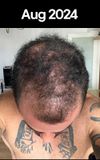community Finally got to see my dermatologist for dutasteride today. He said that dutasteride will not cause a shed. Everyone on Reddit says otherwise.
User lost ground on finasteride, switched to dutasteride. Dermatologist said no shedding, but online experiences differ.
